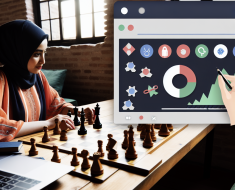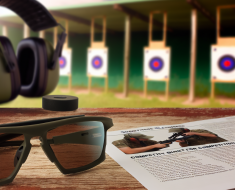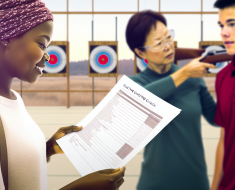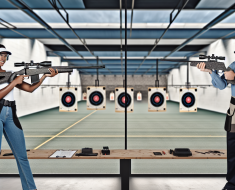How to Train for Competitive Shooting on a Budget
Competitive shooting is a sport that demands precision, discipline, and consistent practice. However, one common misconception is that excelling in this sport requires an expensive arsenal of firearms, ammunition, and high-end training facilities. The truth is, with the right strategies and mindset, you can train effectively for competitive shooting without breaking the bank. This article will guide you through practical and budget-friendly approaches to develop your skills, improve accuracy, and prepare yourself for competition.
Understanding the Costs Involved in Competitive Shooting
Before diving into budget-friendly training methods, it’s important to understand where your money typically goes in competitive shooting. Knowing these expenses allows you to identify areas where you can economize without sacrificing quality.
- Firearms and Equipment: Competitive shooters often own specialized pistols or rifles designed for precision and speed. High-end models can cost thousands of dollars.
- Ammunition: Ammunition is one of the most recurring expenses. Competitive shooters may go through hundreds or thousands of rounds during training.
- Range Fees and Memberships: Access to shooting ranges often comes with hourly fees or annual memberships.
- Training Courses and Coaching: Professional coaching can be expensive but invaluable for skill improvement.
- Maintenance and Accessories: Cleaning supplies, holsters, targets, eye and ear protection add up over time.
A 2023 survey by the National Shooting Sports Foundation revealed that the average annual spending for a recreational competitive shooter ranges between $1,500 and $4,000. For newcomers or those training on a tight budget, this figure can be daunting but certainly not insurmountable.
Selecting Cost-Effective Gear Without Compromising Performance
Your choice of firearm and gear plays a crucial role in both your performance and your budget. Here’s how to make smart choices when assembling your kit:
- Start with a Reliable Entry-Level Firearm: Brands like Ruger, Smith & Wesson, and CZ offer reliable pistols at reasonable prices—typically between $400-$700—that are suitable for most competitive shooting disciplines like USPSA or IDPA.
- Buy Used or Refurbished Equipment: Many experienced shooters upgrade regularly and sell their well-maintained firearms at discounted prices. Websites like GunBroker or local gun stores often have good deals on pre-owned gear.
- Ammunition Alternatives: Reloading your own ammunition can significantly cut costs in the long term if you invest in reloading equipment. For beginners, look for bulk purchases or reloadable brass options to save money.
- Bargain on Accessories: You don’t need top-of-the-line holsters or sights initially. Basic nylon holsters or aftermarket adjustable sights can be affordable yet effective options while you develop your skills.
A case study from a competitive shooter named Lisa M., who qualified for regional matches using a $500 handgun bought used online combined with hand-loaded ammunition, demonstrates how modest investments can still yield competitive results.
Maximizing Practice Efficiency: Training Smart Over Training Expensive
The adage “train smarter, not harder” is especially relevant when working within financial constraints. Instead of spending hours firing hundreds of rounds at the range every week, focus on quality practice sessions that enhance specific skills efficiently.
- Dry Fire Training at Home: Dry firing—practicing trigger control without live ammunition—is one of the most cost-effective ways to improve fundamentals such as sight alignment, trigger press, and grip stability. It requires minimal equipment: just your firearm (ensure it is unloaded) or a training pistol and possibly snap caps for safe practice.
- Create Your Own Targets: Use printable targets from online sources or design custom drills that simulate competition stages using simple materials like paper or cardboard instead of expensive reactive targets.
- Use Shot Timers Wisely: Shot timers help track split times during drills; smartphone apps such as “ShotTimer” offer affordable timing solutions compared to dedicated devices costing hundreds of dollars.
- Focus on Fundamentals First: Prioritize accuracy over speed initially by performing slow-fire drills until consistent shot placement is achieved. This reduces wasted ammunition from missed shots during fast stages later on.
A study published in the Journal of Sports Sciences highlights that dry fire practice alone can improve marksmanship by up to 30% when combined with occasional live-fire sessions—a testament to its effectiveness as an economical training tool.
Tapping Into Community Resources: Leveraging Local Clubs and Online Platforms
You don’t have to train alone or pay premium prices for coaching if you tap into community resources available both locally and online. Many shooters have found affordable ways to learn from peers without expensive fees.
- Shooting Clubs and Associations: Joining local clubs affiliated with USPSA (United States Practical Shooting Association), IDPA (International Defensive Pistol Association), or NRA-affiliated groups often grants access to group training sessions at reduced costs compared to private lessons.
- Group Practice Sessions: Group drills allow sharing range fees among members while benefiting from peer feedback. Experienced members often volunteer guidance during informal meetups which can be








